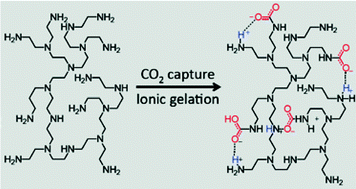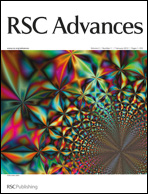Siliceous mesostructured cellular foams (MCF) impregnated with polyethylenimine (PEI) of various molecular weights and structures were evaluated as CO2 adsorbents. The MCF solid support consisted of a well-defined interconnected three-dimensional mesoporous structure with large cell diameter of 30.3 nm and large window diameter of 11.3 nm, filled with polyethylenimine up to 70 weight percent or about 22.3% nitrogen atom by weight of the adsorbents. While other mesoporous solid supports lost their porosity after PEI impregnation, our MCF solid support maintained its pore volume over the range of 1.12 to 1.64 cm3 g−1. The importance of the porosity of PEI-impregnated MCF adsorbents for high capacity CO2 adsorbents was demonstrated. The highest CO2 sorption capacity (180.6 mg-CO2/g-adsorbent or 393.6 mg-CO2/g-PEI at 75 °C) was obtained for silica supports loaded with 50 weight percent branched PEI with average molecular weight of 600 g mol−1. Under dry atmospheric CO2 gas, this adsorbent reached the theoretical CO2 capacity of 0.50 mole-CO2 per mole-nitrogen within less than about 8 min, making this adsorbent one of the most effective CO2 adsorbents reported. Repeated multiple sorption cycles demonstrated good stability of this adsorbent for CO2 capture. The initial sorption kinetics determined the overall CO2 sorption capacity, which was limited by the formation of a carbamate layer as a result of the CO2–PEI complexation that due to inhibition of CO2 diffusion; the kinetics of “ionic” gelation of the impregnated PEI by CO2 controlled the overall performance of the CO2 adsorbents. At 75 °C, the operating temperature favored the molecular mobility of PEI and unrestricted diffusion of CO2 to allow the theoretical CO2 capacity of the PEI to be attained. Lower temperatures limited the mobilities of PEI and CO2 and the kinetics of “ionic” gel formation dominated, causing a lowered overall performance of the CO2 adsorbents. Overall, this study points to the importance of interconnected porous channel networks to optimize the performance of PEI-impregnated mesoporous silica particles.

You have access to this article
 Please wait while we load your content...
Something went wrong. Try again?
Please wait while we load your content...
Something went wrong. Try again?


 Please wait while we load your content...
Please wait while we load your content...